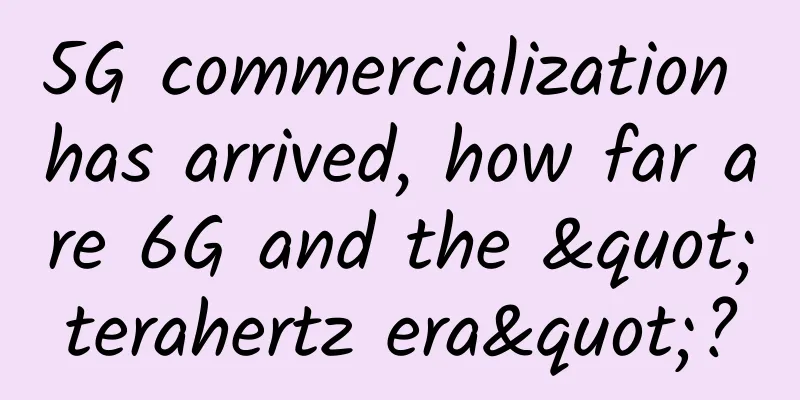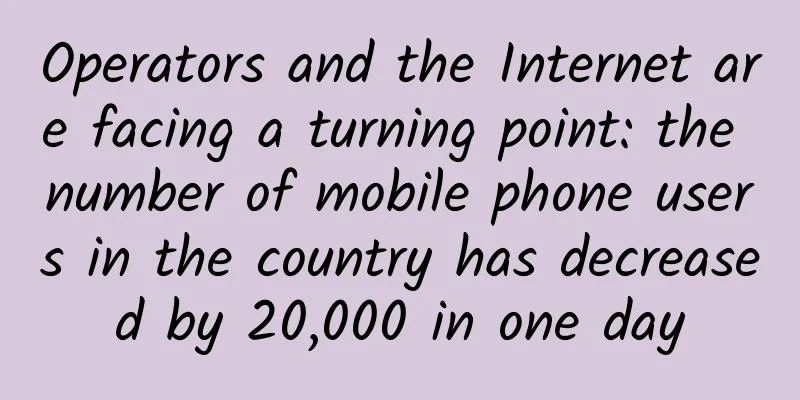5G commercialization has arrived, how far are 6G and the "terahertz era"?

|
On October 31, 2019, the three major operators announced 5G commercial packages, and officially launched 5G commercial packages on November 1, marking that China has officially entered the 5G commercial era. As an extension of 5G technology, the sixth-generation mobile communication technology 6G has gradually become a focus of attention in the industry. On November 3, 2019, China announced the establishment of the National 6G Technology R&D Promotion Working Group and the Overall Expert Group, marking the official launch of my country's 6G technology R&D work.
Historically, mobile communication systems are updated approximately every ten years. 2019 is the first year of 5G commercialization, and the industry generally believes that 6G commercialization will be realized around 2030. It is understood that 6G mobile communications will connect a large number of wireless terminals, and the performance will be improved by more than 10 times on the basis of 5G. Therefore, the peak rate requirement will reach more than 100Gbit/s or even Tbit. And 6G will officially enter the terahertz (THz) era and enter the 0.1THz-3THz frequency band transmission. Terahertz communication has a large available bandwidth and has ultra-high-speed transmission capabilities that are "comparable" to optical fiber. It is considered to be one of the key technologies of the future 6G. Dr. Yu Xianbin, head of the terahertz communication project at Zhijiang Laboratory, told reporters at the Youwen Forum that 6G will have the characteristics of "broadband, ubiquitous, and intelligent". It will be an ultra-high-speed wireless access network that integrates multiple networks, combines multiple information service functions, is ultra-secure, ultra-reliable, and highly intelligent. In addition to a faster network experience, 6G may also bring many new changes to people's lives, work, and study, and even give birth to many new industries. For example, VR/AR/MR technology will replace today's smartphones, remote holographic technology will be widely used in distance education, telemedicine, remote office and other fields, and connected autonomous driving will become the main way for people to travel, etc.
At present, my country has carried out research in terahertz communication technology, intelligent network, large-scale wireless access technology and other potential 6G related directions, and has achieved certain preliminary research results in high-speed terahertz communication. For example, in 2014, the China Institute of Engineering Physics achieved 3Gbit/s 50m communication transmission at 340GHz based on electronic solid-state devices, and in 2016, Zhejiang University took the lead in achieving more than 100Gbit/s indoor communication transmission in the 400GH frequency band based on optoelectronics. These are representative achievements of the first generation of terahertz communication systems in the world. "2019 is the first year of 6G research and development. my country has also made arrangements for the research and development of 6G technology. Overall, global research on 6G technology is still in the exploratory stage," said Yu Xianbin. As one of the key technologies of 6G, terahertz technology, in addition to communication, terahertz imaging technology and terahertz spectroscopy technology are also two main directions of terahertz application. For example, in terms of security detection, with the help of terahertz's ability to penetrate walls, objects behind the wall can be imaged in three dimensions, and hidden weapons, armed personnel, etc. can be detected. For another example, many organic macromolecules and explosives show strong absorption and dispersion characteristics to terahertz waves. The unique spectral characteristics of terahertz waves can be used for biological detection and detection of dangerous and explosive items. Yu Xianbin believes that the biggest bottlenecks in 6G applications currently lie in ultra-high speed, ultra-low latency, ultra-high reliability, the short transmission distance of high-frequency signals, and high base station density requirements. |
<<: Why don't we use HTTP directly for calls between services but use RPC?
>>: Practice | Wireless AC+AP deployment solution
Recommend
What impact will satellite internet have on you when it really arrives?
Starlink, a satellite internet service that has b...
Experts give reasons for slow 4G network speed: too many users and bloated apps
Do you feel that the current 4G network speed is ...
Experts: 6G will be available in 10 years and is expected to be 100 times faster than 5G
5G has not yet been fully rolled out, but 6G is a...
Kunpeng University Tour is coming soon. How can the Sichuan-Chongqing Twin Cities Economic Circle be without Kunpeng?
[51CTO.com original article] At 2:00 pm on Thursd...
Big data credit reporting system is the future development direction. Credit reporting helps the healthy development of the economy.
On December 5, the 4th International Forum on Int...
AT&T to use open source SDN technology to prove 5G
As the next generation of mobile communication te...
Facebook Open/R, the next generation routing platform and the future of network engineering
[[213724]]...
What is the difference between WiFi and Ethernet connections?
In today's networking world, Wifi and Etherne...
DiyVM: Hong Kong CN2 & Japan & US VPS, KVM architecture, 2G memory starting from 50 yuan/month
DiyVM is a Chinese hosting company founded in 200...
TCP/IP knowledge point: host-to-host layer protocol
Host-to-Host Layer Protocol The main function of ...
On the first day after Double Eleven, I heard that programmers all went here to "carnival"...
November 12, 2017, 2:00 p.m. The autumn is crisp,...
The first batch of commercial 5G networks may not even be able to make phone calls?
01.Everyone is paying attention to the 5G Interne...
Distributed ID Solution Detailed Explanation
In a distributed system, it is very important to ...
It’s the beginning of the new school year again. Operators’ “5G+” builds a solid line of defense for campus security
It's the start of another school year. China ...
The rise of the NetOps engineer
NetOps, also known as NetDevOps, is the practice ...









